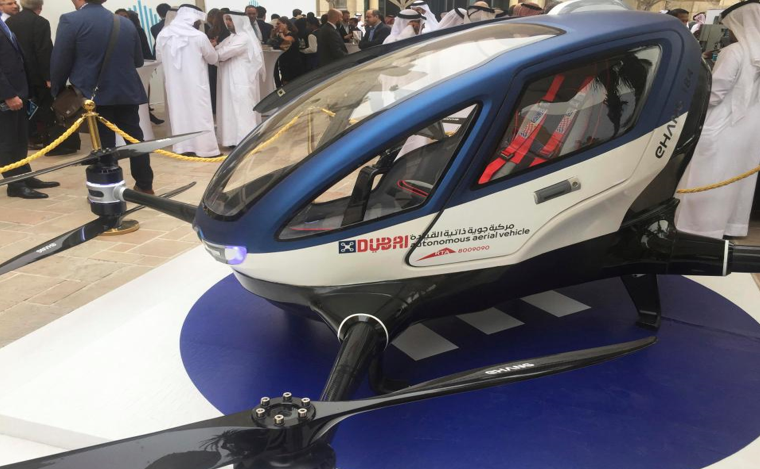
Technology advancement has made the evolution of the transport sector seem like science fiction. Who knew the world will ever have self-driving that? Forget that, who knew that we will ever have driverless flying taxis? Well, they are finally here.
The Dubai emirate’s Roads and Transport Authority (RTA) has announced that Dubai will be the first city in the world to receive driverless flying taxis. The announcement was made on Monday 13th February 2017, at the World Government Summit in Dubai. The taxis is a project between the RTA and the Chinese firm Ehang and is expected to take to the skies around July 2017.
According to Mattar al- Tayer, the head of Dubai’s transportation agency, they had already carried out actual tests of the flying vehicle across the Dubai skies. The drone can fly without a human supervision and will be part of the city’s transport system. The Ehang 184 carry’s one passenger at a time and can take up a luggage of 100kg maximum. It electric powered driverless flying taxi can go up to speeds of 31 miles per hour.
Passengers will hail the flying taxi using an app, enter a destination and the drone will route a map to the destination.
The driverless flying drones replicated Dubai’s self-driving transport strategy that is aimed at transforming 25 percent of total individual trips in the city to self-driving trips by 2030.
The vehicles are just the latest addition to the futuristic transport services that have been witnessed around the world in the last few years. The revelation comes a few months after self-driven cars were launched by Uber.
In September 2016, Uber- a global taxi giant – launched a self-driving fleet of taxis in the US, making it the first automotive or technology company to achieve this. The taxis use cameras, lasers, radar and GPS to navigate from point to point and have continued to expand to various part of the world.
Travis Kalanic, CEO, and Founder of Uber said that self-driving cars are predicted to start reducing traffic jams in as few as 5 years. He was speaking at the World Government Summit in Dubai where the future of transportation was a major talk.
Evolution on the tracks has also been making breakthroughs. The maglev train in Shanghai is the world’s fastest commercial train. The hanghai maglev train operates at speeds of up to 430kph, floating on magnetic fields located between the rain and tracks.
The Shanghai Maglev or magnetic levitation train can go from 0 to 109kph in four minutes. In 2027, Japan will also put its maglev train to commercial use. The ‘bullet train’ which is currently in the prototype phase broke a world record in 2015 during a test by traveling to a speed of 603kph, covering 1.6km in 10 seconds.




